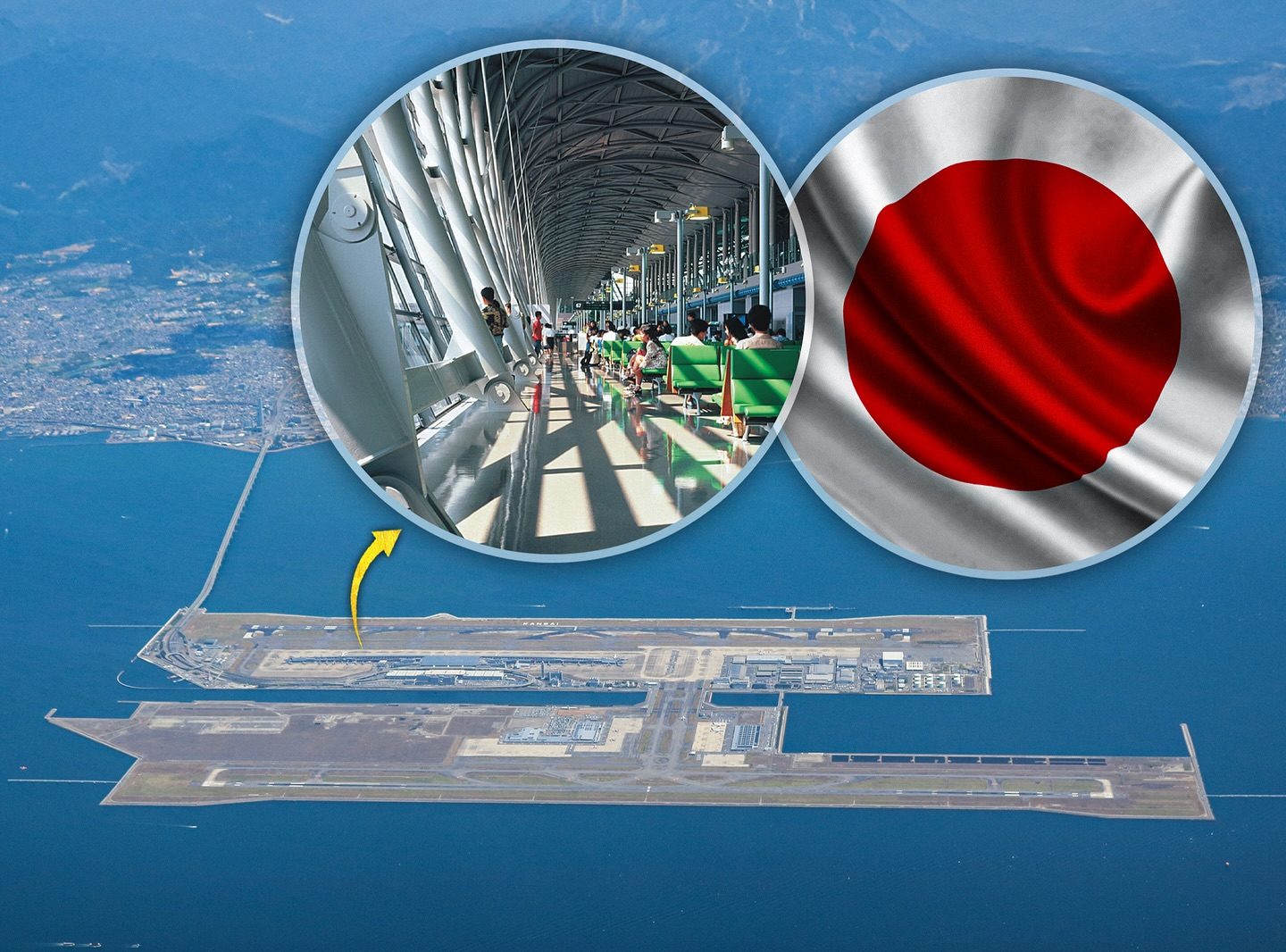This $20 Billion Floating Japanese Airport Is Sinking
When Japan unveiled Kansai International Airport in 1994, it was hailed as a marvel of modern engineering — a $20 billion floating gateway to Asia. Built on an artificial island in Osaka Bay, it wasn’t just an airport, it was a symbol of human ambition against nature. But three decades later, that symbol is in trouble. The ground beneath it is quietly giving way. And if current trends continue, this modern marvel could be underwater within a generation. What began as a bold dream is now turning into an engineering nightmare — one that comes with a sobering price tag and a ticking clock.
It Has Sunk Almost 40 Feet Since Then and Could Be Below Sea Level by 2056
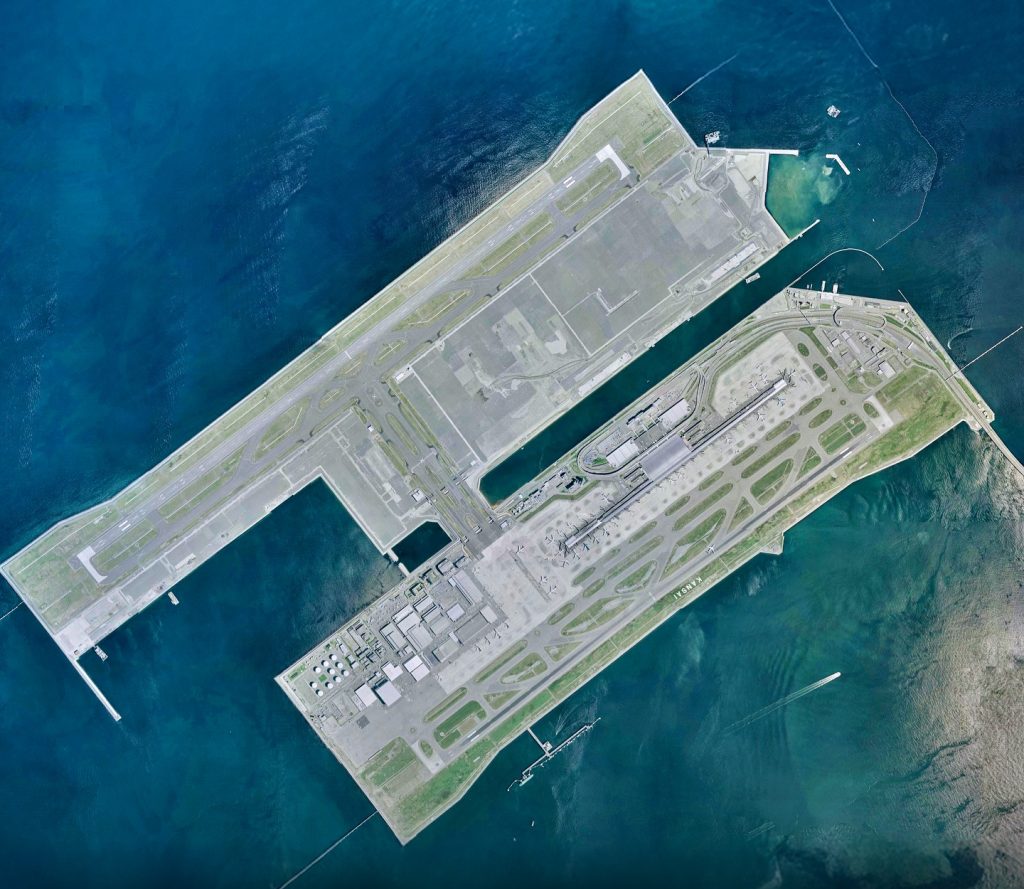
The numbers are hard to ignore. Since the day Kansai opened its doors to the world, the man-made island it sits on has already sunk nearly 40 feet. That’s not a minor shift — it’s a slow-motion descent into a very real danger zone. And the problem isn’t just about aesthetics or inconvenience. Experts now warn that by 2056, parts of the island may be at or even below sea level, putting the airport’s future — and safety — at risk. This isn’t a hypothetical warning. It’s a very real projection based on continuous monitoring of the seabed. The culprit? A combination of reclaimed soil compressing under its own weight and the unpredictable behavior of marine clay. In short: nature is fighting back.
Kansai International Airport Is the World’s First ‘Floating’ Airport, Built in 1994
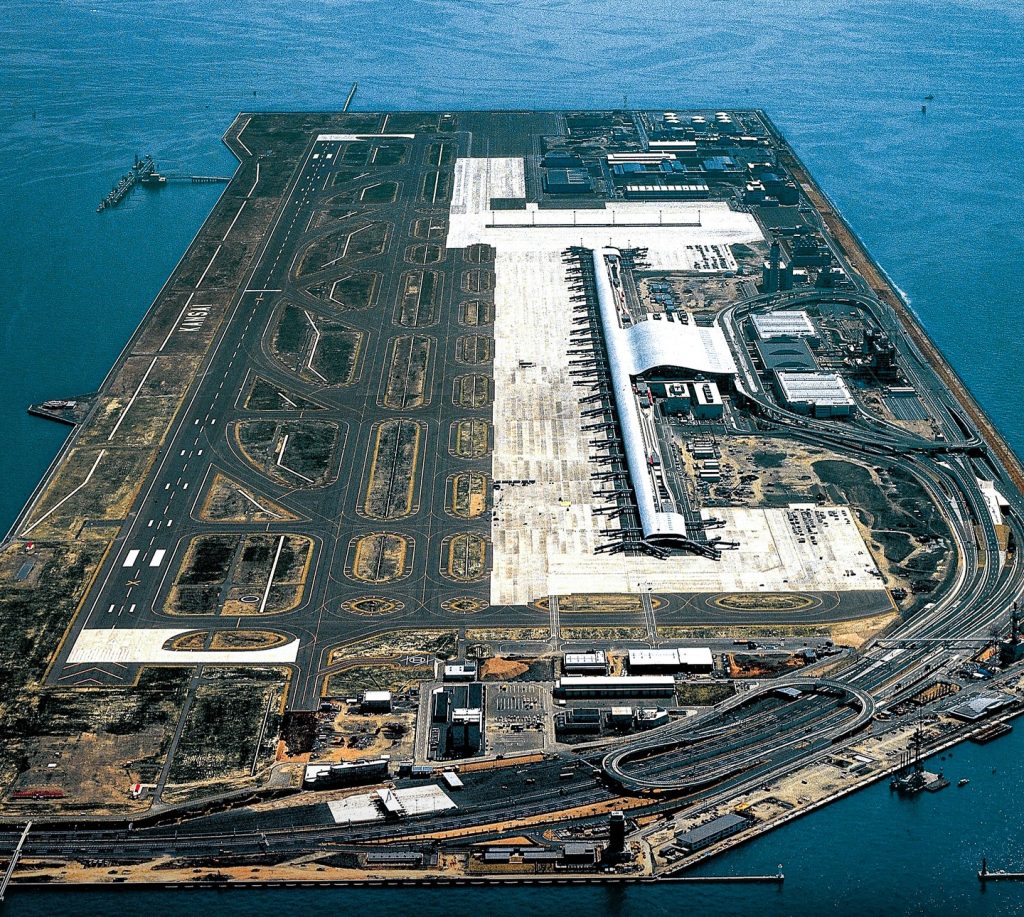
When Kansai was first announced, it was seen as the solution to a problem that had plagued Japan’s aviation for decades — land scarcity. There simply wasn’t room to build a new airport inland. So instead of reshaping the land, Japan decided to conquer the sea. Engineers created an artificial island over five kilometers off the coast, anchored it to the seabed, and raised a terminal unlike any other. It wasn’t just a feat of engineering — it was a statement. The world watched in awe as Japan pulled off what seemed impossible. But bold ideas come with bold risks, and Kansai’s floating foundations were always a gamble. One that, in hindsight, may have been far riskier than anticipated.
Inside, the Terminal Still Reflects Japan’s Vision of the Future
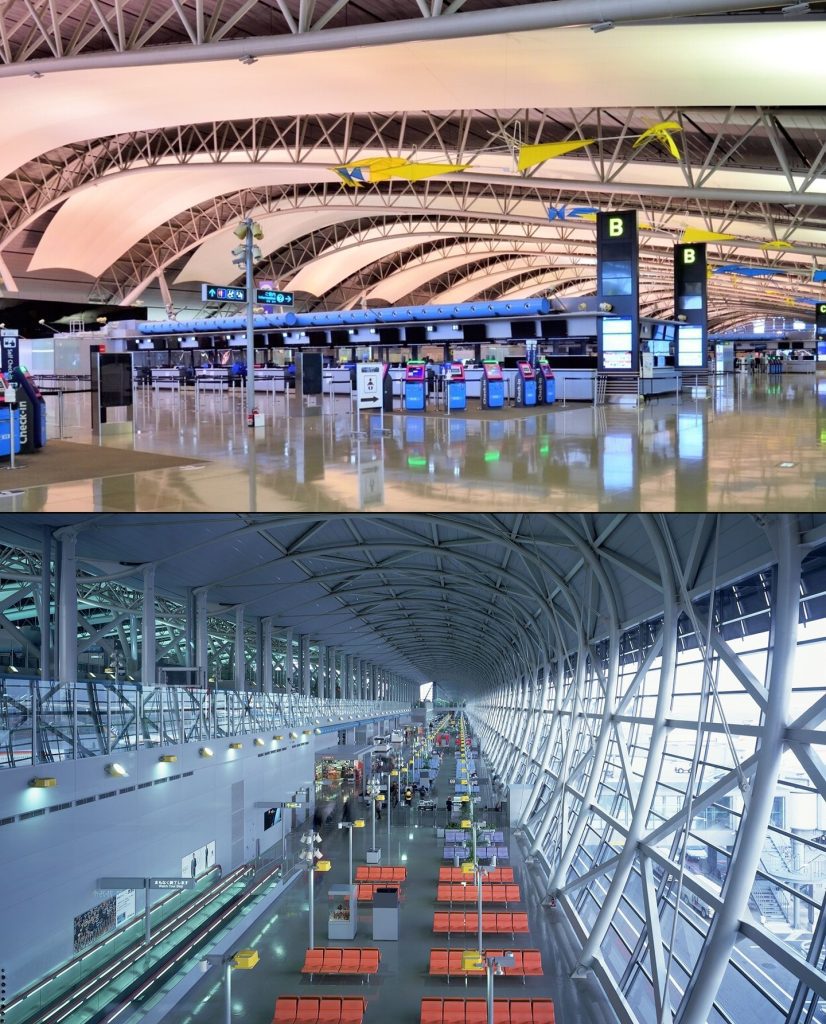
Despite its sinking foundations, the interior of Kansai International Airport remains a picture of precision, cleanliness, and high design. Wide corridors, seamless check-in processes, and sunlit lounges showcase the country’s attention to user experience and infrastructure aesthetics. For travelers, it’s still one of the most efficient and visually striking airports in the world. But beneath all that futuristic sheen lies a creeping reality. It’s a bit like watching a luxury cruise ship slowly taking on water. Everything might look fine from the lobby — but underneath, the struggle is getting harder to ignore.
The Weight of the Reclaimed Soil Is Compressing the Seabed Relentlessly
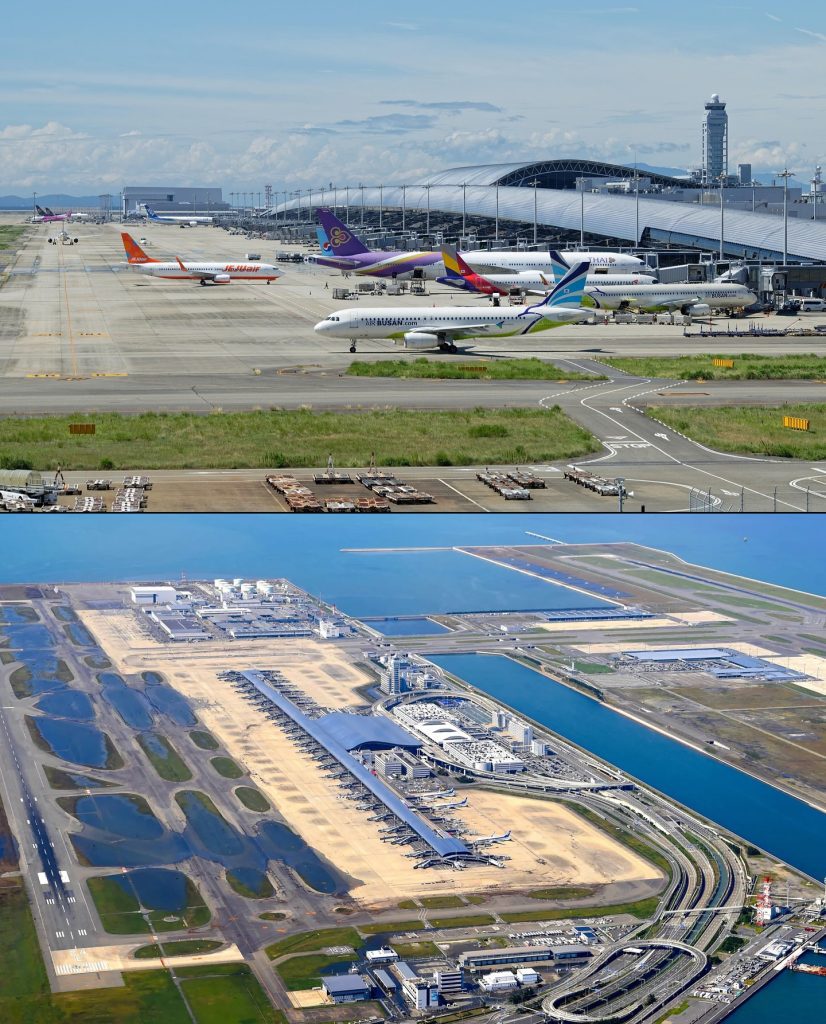
One of the core issues with Kansai’s ongoing subsidence lies in how it was built. Constructing an artificial island isn’t like placing a Lego piece into the ocean. It means dumping massive amounts of soil and rock into the bay — material that sits atop soft, squishy marine clay. And that clay doesn’t respond well to pressure. Over time, it compresses and settles, and unfortunately, that settling hasn’t stopped. Despite attempts to stabilize the island using deep foundation techniques and hydraulic jacks, the downward movement continues. It’s a quiet enemy. One that can’t be reasoned with or reverse-engineered. And one that may eventually outlast even the airport’s strongest steel reinforcements.
Repairs and Engineering Work Have Helped Slow the Process — But at a Cost
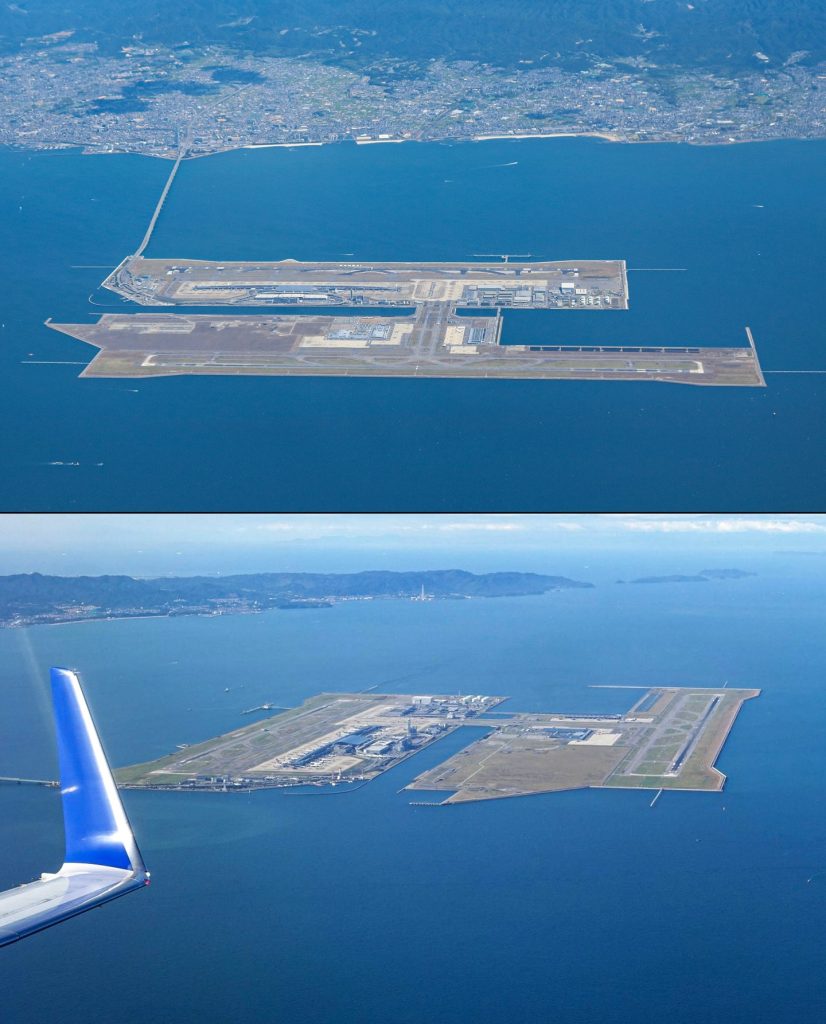
To Japan’s credit, the country hasn’t just stood by and watched. Engineers have fought back with every tool in the playbook — from reinforcing foundations to lifting terminal buildings using computer-controlled jacking systems. Billions more have been spent post-construction to maintain safe operating levels. But here’s the hard truth: this isn’t a problem that can be “fixed” once and for all. It’s a problem that requires constant intervention. A kind of life support. And like any system that depends on expensive, continuous maintenance, the big question is: how long can they keep it up?
Kansai Remains a Cautionary Tale for Ambitious Megaprojects Worldwide
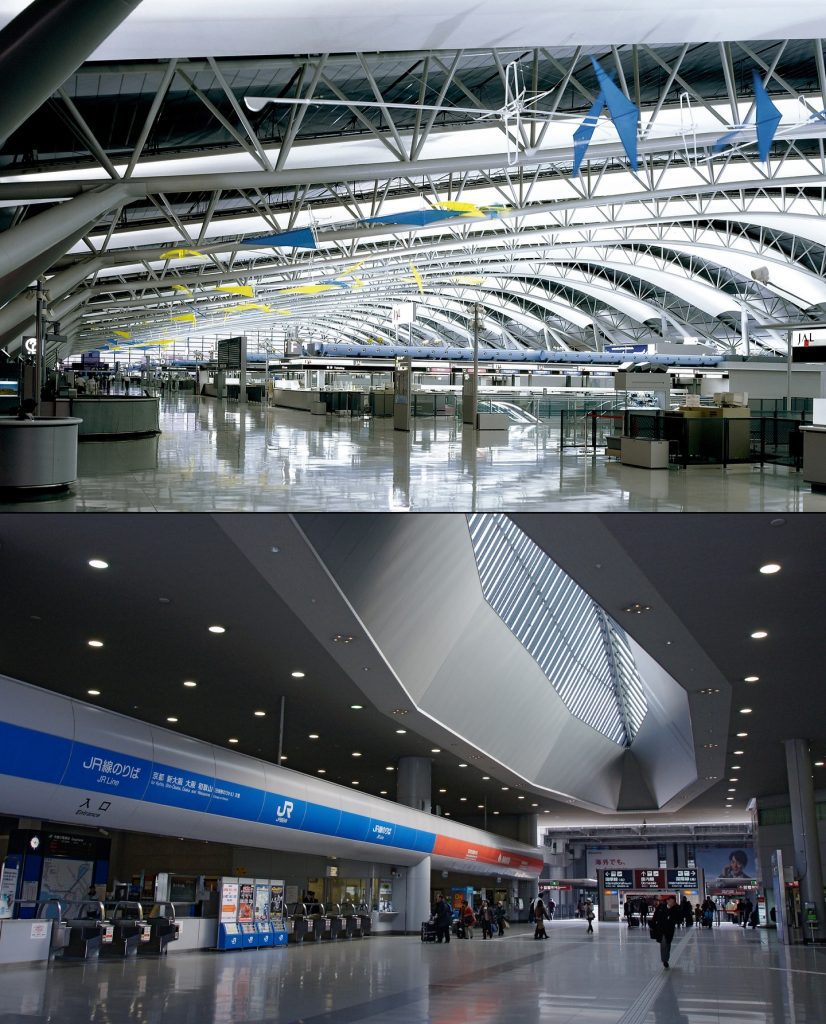
If Kansai International Airport teaches us anything, it’s that human ambition, no matter how brilliant, must respect nature’s limits. The story of this airport isn’t just about Japan — it’s about every country that dreams of conquering the elements for the sake of progress. Floating cities, underwater tunnels, desert megastructures — they all carry lessons from Kansai. That doesn’t mean we should stop innovating. But it does mean we need to build with humility, not just confidence. Because when the ocean pushes back, even a $20 billion marvel might not float forever.

